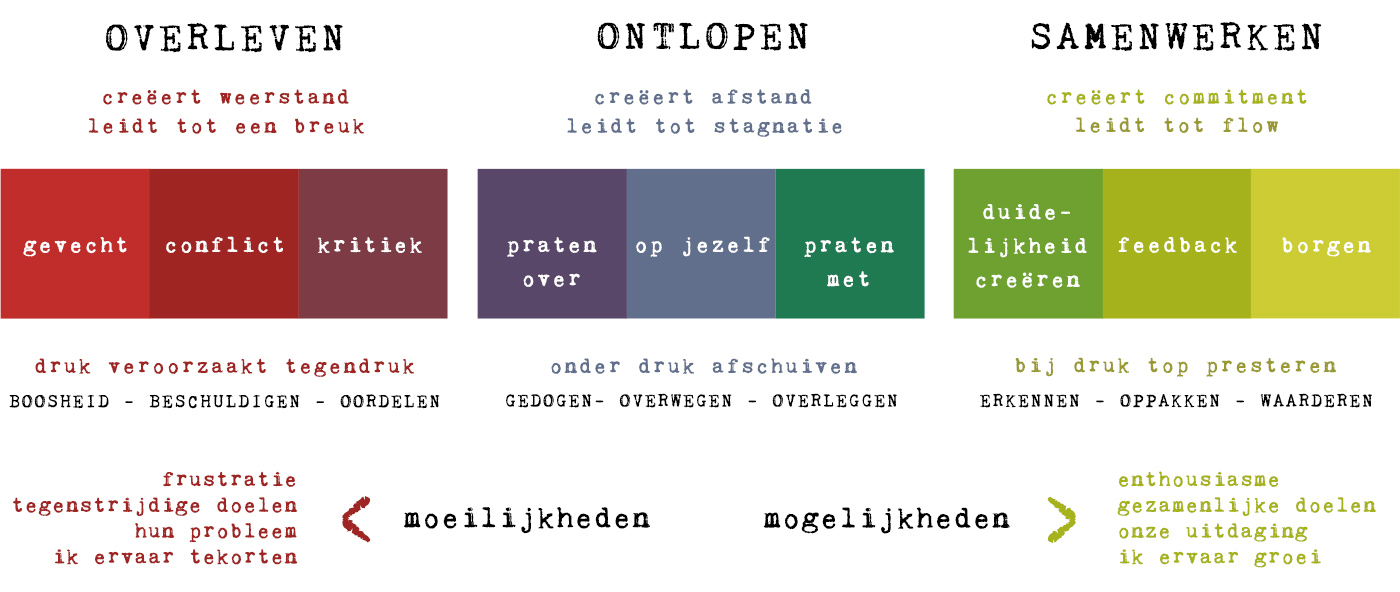Struggling ⇿ Avoiding ⇿ Cooperating
Later, we increasingly used 'Cooperation' as a synonym for 'learning'. The three-pronged approach became Struggling - Avoiding - Cooperating abbreviated "O-O-S" - in Dutch. Learning gave confusion because in a Struggling setting you also 'learn', not what you need to cooperate with energy, but you could call it learning to survive. Struggling is active, Cooperating is active and Escaping is in between: that can be an escape from a Struggling setting, literally getting sick of something and also saying 'yes' and doing 'no' in addition to that, while no one calls you on it with effect. It is a kind of fog in which you become increasingly distant from each other. Both in a struggling setting and in cooperation, you can 'go into the mist' with it.
It must have been around 2002, the time also when the Scale was translated in English, originally abbreviated as "SAC": Surviving - Avoiding - Cooperating. Later, Surviving became Struggling, because 'to survive' is too strongly linked to 'overcoming', whereas in a world of Struggling it may be about overcoming, but ultimately the behaviour (also) produces casualties and resistance, irritation and 'opposing'. 'Struggling' captures that better.
Avoiding
There are many books on struggling, the fight, conflict and resulting 'countermovement' of diplomacy and (much later) mediation and non-violent communication. There are also many books on team play, cooperation, group development, group roles, communication styles, leadership, flow, etc. There are few, if any, books on the world in between: Escape. Perhaps 'who would want to read that?' Fighting with - under stress - the choice between fight, flight or freeze on the one hand and fine trusting cooperation on the other, are totally different worlds. Working together creates a world where everyone is indispensably in place and takes on a challenge with flow. We notice now that we are using the Scale in professional teams how important (our definition of) Avoidance as a phenomenon actually is. Little literature has been found on it, let alone the combination of surviving, Avoiding and Cooperating in the form of a route over which teams move back and forth.

